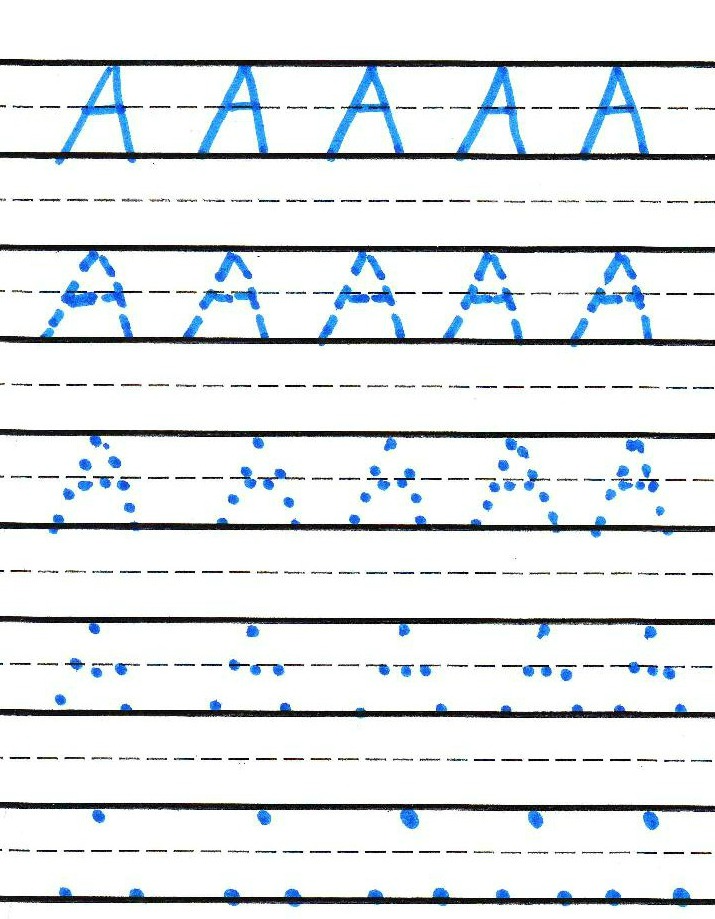- Home
- Teaching Strategies
- Prompt fading
Use Prompt Fading Techniques to Increase Your Child's Independence
Using prompt fading techniques after children have mastered skills is often essential to helping them retain what they have learned. Prompting is a great way to help them learn just about anything. But prompt fading will help them maintain the skills they have learned without needing the prompts anymore.
If you haven’t read the page on prompting, I suggest reading that page first and then coming back here. Then this page will make a lot more sense to you. (Unless you are looking for information on how to fade rewards, in which case you can just continue reading or even skip to the bottom of this page.)
Once you have read about prompting, it’s important to know how to reduce those prompts to the point that they no longer need them.
Now you may be thinking that this seems like a lot of extra busy work, as if we parents have nothing else to do with our time. But I wouldn't suggest you do something extra unless it was important.
As you know, our kids learn quite a bit differently from most children, and sometimes this step is needed. I'll explain this below.

Why Prompt Fading Works for Children With Autism
Suppose you have taught your child how to wash his hands. You’re using the
hand-over-hand technique. You’re turning on the water for him, holding his
hands, and moving his hands for him.
Now it’s time to phase out that prompt. Why?
Because if you don’t, he might remain dependent on cues and prompts. He might fail to learn how to perform the task without any help.
But this doesn’t mean that you’re going to let his hands go and let everything fall apart.
With a prompt fading technique, you will be gradually reducing the amount of prompting you are giving him until he can do the task well without your help.
I’ll give you a couple of examples of how to do this.
Hand-Washing Example
Let's say Billy is washing his hands well because you are helping him using the hand-over-hand technique, which means you're holding his hands and actually washing them for him.
Now it’s time for the prompt fading phase so he can wash his hands without needing your help. I’ll outline some steps you could follow to phase yourself out of the hand-washing process.
- Touch his hands, gently guiding him through the process. At this point, you’re not doing the action for him like you were before. You’re just giving his hands little pushes, directing them where you want them to go.
- Once he is doing the task well with that prompt, you could move to tapping his hand, tapping the soap and tapping the faucet handle. This tapping will let him know what he needs to do next.
- Once he is used to the tapping prompt, you can move to a verbal prompt only. You could say, “Turn on the water. Get some soap.” And so on.
- Next, reduce the verbal prompts to just one word. “Water. Soap. Rinse. Dry.”
- Eliminate the verbal prompts, and let him wash his hands on his own.
You could vary the prompt fading procedure according to your needs. For example, you could be giving him verbal instructions along with step 1 if you think he needs it. Then in step 3, you can remove the physical prompt, leaving only the verbal prompt.
Learning to Write Using Visual Prompts
 Fading Letters
Fading LettersRemember that in the prompting article I discussed moving from a more intensive prompt to a less intensive one?
I described starting with the hand-over-hand technique. The next step was to push the wrist to keep it down against the paper. And the last step was a touch on the hand as a cue to write. That was an example of fading physical prompts during a writing lesson.
That same writing lesson could be done with visual prompts, too. Here are some possible steps you could follow for prompt fading when you've been using visual cues.
- First, they trace over letters you have written ahead of time.
- Next, they will trace over letters written with dotted lines.
- Then you gradually reduce the amount or intensity of the dotted lines until they are almost nonexistent.
- Finally, they will write the letters without any visual prompts.
Remember that it’s also important to be sensitive to the needs of the child, and change the procedure as required.
There are likely a thousand different ways you could phase out your prompts. As someone has said, “Do what works.”
If they pick up very quickly on what they are supposed to do, they may not need any more prompting. You can eliminate the whole fading process for that task. Remember the principle to use prompts only as much as they need them.
But in another situation, they may need to stay at a certain stage of the phasing-out process for a while before moving on.
The point here is to be aware of your child's needs and to change your plan accordingly when necessary.
Fading Rewards
Fading rewards is similar to reducing prompts.
If you're teaching them a new skill, such as toilet training, and you want them to keep making progress, you would give them a reward each time they use the bathroom.
But once they reach the point where they are trained and using the toilet consistently, it's time to start reducing those rewards.
You might think you can stop all rewards immediately. But that could be a serious mistake.
Why?
Because if you do that, they may also stop using the bathroom because the rewards stopped.
This is a common problem with stopping rewards abruptly, and that's why it's best to phase them out gradually and randomly.
You would move from rewarding them every time to only once in a while. You might choose to withhold the reward every second, third, or fourth time they use the restroom.
Changing it up each time is also helpful. Rather than always giving the reward for every third visit to the bathroom, you would offer the prize on the third visit, then two visits later, then four visits later, etc.
Gradually, you'll want to give them fewer rewards until they only receive it once every five, six or seven visits to the bathroom.
Finally, you'll be phasing them out until they no longer receive them at all.
This is called a variable schedule of reinforcement, a method of phasing out rewards until they're no longer needed. This technique is proven to be effective in keeping the new behavior or skill from disappearing.
Once you've phased out all rewards, they may even forget about the prizes they used to get.
But if they ask about it, I would say something like, "You're going to the potty so well now, and you're such a big girl that you don't even need that anymore. Way to go! I'm so proud of you!"
Need More Help?
Carrie Clark of Speech and Language Kids understands the concept of prompt fading quite well. As a speech therapist, she is applying what she knows to teaching her own child new skills. She has a great way of explaining this concept and demonstrating how any parent can use this knowledge to help their children acquire new skills or overcome bad habits.
Armed with this information you can teach your children just about anything that they are capable of learning. I believe prompt fading is an under-used technique that more parents of children with autism could apply with a lot of success.
New! Comments
Have your say about what you just read! Leave me a comment in the box below.